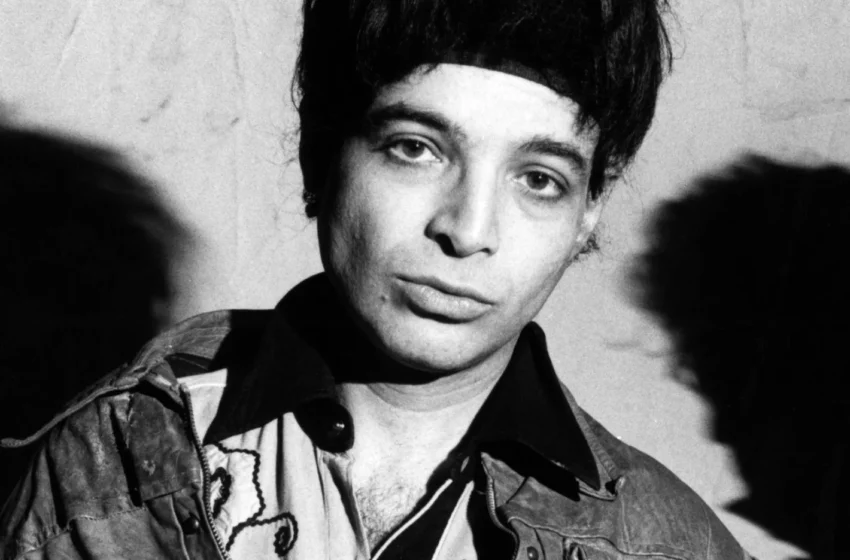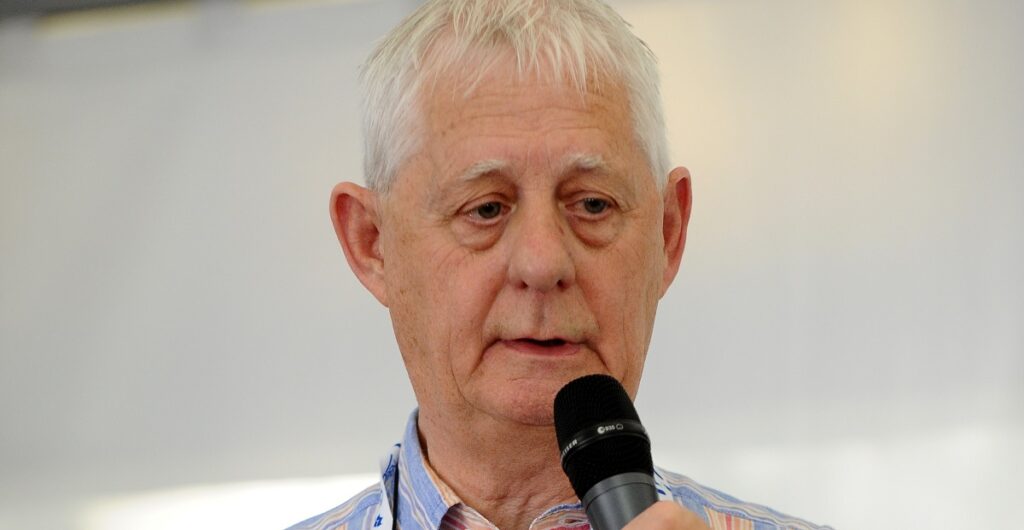Alan Vega Quotes

Early Life and Inspiration
Rise to Fame in New York City
The early life of Alan Vega began on June 23, 1938, in Brooklyn, New York. He was born with the name Howard Alan Katz to a Jewish family. Vega’s father worked as a clothing manufacturer and his mother was a homemaker. Growing up in a middle-class household, Vega had a comfortable but not overly privileged upbringing.
Vega’s early life was marked by a strong interest in sports, particularly football and baseball. He attended the prestigious Brooklyn Technical High School, where he developed his passion for academics as well. However, it was during this time that he also started to explore his creative side, beginning with drawing and painting.
After completing high school, Vega went on to study at the Pratt Institute in Brooklyn. It was here that he began to develop a fascination with jazz music and the avant-garde art movement. He was particularly drawn to the works of artists like Salvador Dali and the surrealist movement.
After graduating from Pratt, Vega moved to New York City’s Greenwich Village neighborhood, where he became immersed in the city’s vibrant artistic scene. It was here that he met his future partner and collaborator, Martin Rev.
Alan Vega’s early life was marked by a fascination with art and music, which eventually led him to become a key figure in the New York City punk scene.
Vega was born on June 23, 1938, in Brooklyn, New York, to a family of Polish Jewish immigrants.
He developed an interest in art at an early age and went on to study graphic design at the City College of New York, but dropped out without completing his degree.
Vega’s fascination with art led him to experiment with various forms of expression, including painting and sculpture.
However, it was music that eventually became his true passion, and he began performing with a band in the 1960s called The Unknowns.
The group played a mix of rock and roll, R&B, and doo-wop, but Vega’s true musical influences were more avant-garde and experimental.
He was particularly drawn to the works of artists like Marcel Duchamp and Meret Oppenheim, who challenged traditional notions of art and pushed the boundaries of what was considered acceptable.
Vega’s early experiences with music and art laid the groundwork for his later work as a singer and songwriter in the punk rock band Suicide.
Key Influences on Alan Vega
- Art: Marcel Duchamp, Meret Oppenheim, and other avant-garde artists who challenged traditional notions of art.
- Musicians: The Velvet Underground, The Stooges, and other underground rock bands that pushed the boundaries of what was considered acceptable in music.
Vega’s unique blend of artistic expression and musical experimentation would eventually make him a key figure in the New York City punk scene.
Influence of French Surrealism and Poetry
The early life and inspiration of Alan Vega, an American musician and poet, played a significant role in shaping his artistry. Born on June 23, 1938, in Brooklyn, New York, to a Lithuanian Jewish family, Vega’s upbringing was marked by the influence of Yiddish culture and language.
As a child, he moved with his family to Bensonhurst, a neighborhood in Brooklyn that was predominantly Italian-American. This cultural exchange had a lasting impact on Vega’s life, exposing him to diverse musical styles and artistic expressions.
Vega’s interest in music began early, and he started playing the guitar at the age of 12. He later attended the High School of Music & Art in New York City, where he developed his skills as a musician.
After completing high school, Vega moved to Chicago to attend the School of the Art Institute of Chicago. During this period, he became fascinated with the works of French Surrealist artists, including André Breton and Salvador Dalí. Their experimental approach to art had a profound influence on Vega’s own creative pursuits.
Vega’s fascination with French Surrealism led him to explore the concept of automatism, which involved channeling the subconscious through spontaneous writing and drawing. He applied this technique to his poetry, allowing his thoughts and emotions to flow freely onto paper without censorship or editing.
The influence of Surrealism can be seen in Vega’s use of imagery, symbolism, and the exploration of the human psyche in his poetry. His words often blur the lines between reality and dreams, creating a sense of ambiguity that invites the reader to reflect on their own perceptions and experiences.
Vega’s work was heavily influenced by French Surrealist artists such as Marcel Duchamp and Yves Klein, as well as poets like Arthur Rimbaud.
The early life and inspiration of Alan Vega were deeply influenced by various art movements and literary figures.
Born on June 23, 1938, in Brooklyn, New York, Vega’s upbringing was marked by a mix of bohemianism and urban grittiness that would later shape his artistic persona.
He grew up in the Williamsburg neighborhood of Brooklyn, where he developed an interest in jazz and avant-garde music through exposure to local clubs and artists.
This early fascination with experimentation and innovation laid the groundwork for his later involvement in the New York City art scene, where he was drawn to the radical ideas of French Surrealist artists and poets.
Key influences on Vega’s work included Marcel Duchamp, who is renowned for his conceptual and often provocative artistic installations, such as “Fountain” (1917), a urinal signed “R. Mutt.”
Duchamp’s exploration of the boundaries between art and everyday life had a lasting impact on Vega’s own approach to music and performance.
Yves Klein, another prominent figure in the Surrealist movement, was celebrated for his bold and often enigmatic use of color, particularly his signature ultramarine shade known as International Klein Blue (IKB).
Klein’s immersive installations, such as “Relief,” which used a combination of light and color to create an otherworldly atmosphere, likely inspired Vega’s later experiments with visual and sonic atmospheres in his concerts.
As for poetry, Arthur Rimbaud was a significant influence on Vega’s work, particularly his concept of “derangement of all the senses.”
Rimbaud’s emphasis on pushing the boundaries of language and exploring the connections between poetry, music, and visual art would resonate with Vega’s own eclectic approach to creativity.
Vega’s Influences:
- Marcel Duchamp: French Surrealist artist known for his conceptual installations that challenged traditional notions of art.
- Yves Klein: Renowned for his bold use of color, particularly International Klein Blue (IKB), which he employed in immersive installations to create otherworldly atmospheres.
- Arthur Rimbaud: Poet who emphasized the derangement of all senses and explored connections between poetry, music, and visual art.
Influence on Vega’s Work:
- Experimentation: Vega was influenced by his mentors’ willingness to push boundaries and experiment with new forms of artistic expression.
- Conceptual thinking: His exposure to Surrealist ideas encouraged him to think conceptually about the connections between art, music, and performance.
- Innovative use of color: Vega’s work was shaped by his understanding of Yves Klein’s innovative approach to color and its application in immersive installations.
Music Career with The Suicide
Experimental Sound and Live Performances
The music career of Alan Vega, co-founder of The Suicide, was marked by a relentless pursuit of innovative and experimental sound.
Vega’s work with The Suicide spanned over four decades, during which they consistently pushed the boundaries of rock music, incorporating elements of noise, psychedelia, and avant-garde techniques into their performances.
One of the key aspects of The Suicide’s live shows was the intense, high-energy stage presence that Vega brought to every performance. His dynamic interplay with guitarist Martin Rev created a captivating spectacle that drew in audiences worldwide.
The duo’s experimental approach extended beyond just their music; they were known for incorporating visuals and performance art into their live shows, further blurring the lines between sound and vision.
Vega was also a prolific artist, releasing numerous solo albums and collaborations throughout his career. His work often explored the intersection of rock, electronic music, and visual arts.
As an innovator in experimental sound, Vega’s influence can be seen in a wide range of musicians and artists who have followed in his footsteps, from industrial and noise acts to more avant-garde and art-rock projects.
Throughout his career, Vega maintained an unwavering commitment to pushing the boundaries of what was possible with music and performance, leaving behind a legacy that continues to inspire new generations of artists and musicians.
The impact of The Suicide’s experimental sound can be seen in contemporary music and art scenes, where there is a renewed interest in noise, industrial, and avant-garde traditions.
Vega’s unwavering dedication to his artistic vision and his willingness to experiment and take risks has left an indelible mark on the world of music and performance.
His innovative approach continues to inspire artists to explore new sounds and push the boundaries of what is possible in live performances, ensuring that The Suicide’s influence will be felt for generations to come.
As the lead singer of The Suicide, Vega created a unique sound that blended elements of punk, electronic music, and noise.
The Suicide, an influential American post-punk band formed in 1970 in Detroit, Michigan, marked a pivotal moment in the music career of Alan Vega, who emerged as its lead singer and primary songwriter.
During his time with The Suicide, Vega created a distinctive sound that blended elements of punk, electronic music, and noise. This sonic fusion not only resonated with the avant-garde movement of the 1970s but also foreshadowed the post-punk genre’s emphasis on experimentation and boundary pushing.
The band’s early work was characterized by Vega’s raw, emotive vocals and his use of unconventional sounds, including distorted guitars, synthesizers, and drum machines. These experimental approaches not only set The Suicide apart from other punk bands but also laid the groundwork for later post-punk and new wave acts.
One of The Suicide’s most notable achievements was their collaboration with Can, a highly influential German krautrock band, on the 1978 album “The Killer Be Killed”. This release cemented Vega’s reputation as a bold and innovative musician willing to push the boundaries of traditional rock music.
Vega’s time with The Suicide also saw the release of several other albums, including “Museum” (1976), “Does Try” (1980), and “Weirdness” (1984). While these records did not achieve mainstream success, they remain highly regarded by critics and fans for their bold experimentation and Vega’s unbridled energy.
Throughout his career with The Suicide, Alan Vega continued to push the limits of what was possible within the context of punk and post-punk music. His dedication to sonic innovation and his refusal to conform to conventional musical norms not only influenced a generation of musicians but also left an enduring legacy that continues to inspire artists today.
Key releases by The Suicide during Vega’s time with the band include:
- Museum (1976)
- The Killer Be Killed (1978) – collaboration with Can
- Does Try (1980)
- Weirdness (1984)
Vega’s impact on the music world extends beyond his work with The Suicide. He is widely regarded as a pioneer of electronic and noise music, influencing a wide range of artists from industrial bands like Throbbing Gristle to new wave and post-punk acts such as The Sex Pistols and Joy Division.
Alan Vega’s legacy as the lead singer of The Suicide serves as a testament to his innovative spirit and his commitment to sonic experimentation. His influence can still be heard today, shaping the sound of contemporary music and inspiring a new generation of artists.
Collaboration with Martin Rev
The music career of Alan Vega, best known as the lead singer of The Suicide, was marked by his unique and influential sound.
Vega’s collaboration with Martin Rev, a classically trained pianist, in 1977 led to the formation of The Suicide, an industrial rock band that blended noise, electronic beats, and poetic lyrics.
The partnership between Vega and Rev was characterized by their contrasting styles: Vega’s raw energy and punk attitude complemented Rev’s more refined and experimental approach to music-making.
Through their work together, Vega and Rev created a distinctive sound that has been cited as an influence by numerous other artists.
Their live performances were known for being intense and unpredictable, with Vega’s stage presence commanding attention and Rev’s keyboard work providing a sonic foundation for the band’s chaotic energy.
Despite their significant contribution to the development of industrial and post-punk music, The Suicide never achieved mainstream success, but they maintained a dedicated cult following throughout their career.
Vega continued to release music with various collaborators after his breakup with Rev, but the work he did with Martin during their time together in The Suicide remains some of their most critically acclaimed output.
His partnership with keyboardist Martin Rev brought a new level of intensity to The Suicide’s music, with their live performances often described as raw and energetic.
The music career of Alan Vega was truly one-of-a-kind, marked by his unrelenting energy and passion for creating avant-garde rock soundscapes with The Suicide, a project he formed in 1970.
At its core, The Suicide’s music was the perfect blend of post-punk intensity and proto-industrial experimentation, which made them stand out from their contemporaries. And it was this very essence that Vega brought to his partnership with keyboardist Martin Rev.
The duo’s collaborations yielded some truly groundbreaking results, as they pushed the boundaries of what was considered acceptable in popular music. Their live performances were often described as raw and energetic, with Vega’s distinctive vocals soaring above the cacophony of sound created by Rev’s driving synthesizers and pounding drum machines.
One of the key factors that set The Suicide apart from other bands of their time was their unwavering commitment to exploring new sounds and pushing the limits of what was possible. They were true innovators, always seeking to create something new and exciting, no matter how difficult or unconventional it may have been.
Throughout their career, The Suicide released a string of critically-acclaimed albums that not only cemented their status as one of the leading avant-garde rock acts of the 1970s but also paved the way for future generations of musicians to experiment and explore new sounds.
Vega’s work with The Suicide continues to influence a wide range of artists, from industrial and electronic music pioneers like Throbbing Gristle and Cabaret Voltaire, to post-punk revivalists like Interpol and The National.
Cultural Impact and Legacy
Pioneering the Post-Punk Movement
The pioneering post-punk movement of the late 1970s and early 1980s had a profound impact on the cultural landscape, shaping the course of music history and influencing generations to come.
At its core, post-punk was a reaction against the commercialism and formulaic approach of mainstream rock music at the time. It emerged as a raw, experimental, and often abrasive sound that rejected the glamour and spectacle of traditional rock ‘n’ roll.
Pioneers of the movement like Joy Division, The Cure, and Wire pushed the boundaries of what was considered acceptable in popular music. They drew from punk’s energy and DIY ethos, incorporating elements of art rock, krautrock, and electronic music to create a unique sonic landscape.
Post-punk’s influence can be seen in many subsequent genres, including gothic rock, indie rock, and Britpop. Bands like Echo & the Bunnymen, Gang of Four, and Public Image Ltd. further developed the sound, incorporating new wave and reggae influences.
The post-punk movement also had a significant impact on fashion and visual aesthetics. The era’s avant-garde style, characterized by dark colors, ripped fishnets, and bold hairstyles, continues to inspire designers and artists today.
Post-punk’s cultural legacy extends beyond music and fashion. It reflects the mood of a generation disillusioned with mainstream culture and seeking authenticity and meaning in art and politics.
Pioneers of Post-Punk
- Joy Division – Their iconic album “Unknown Pleasures” is often cited as one of the most influential albums in post-punk history.
- The Cure – Their early work, particularly “Three Imaginary Boys,” showcased a raw, punk-infused sound that paved the way for later gothic rock developments.
- Wire – As a key band in the post-punk movement, Wire’s experimental approach and use of electronic elements helped shape the sound of the era.
Key Features of Post-Punk
- Experimentation with new sounds and instruments, such as synthesizers and drum machines.
- A focus on atmosphere and texture over traditional song structures.
- A rejection of commercialism and a focus on artistic expression.
- A fusion of punk’s energy and DIY ethos with elements of art rock and electronic music.
The legacy of post-punk continues to influence contemporary music, fashion, and art. Its pioneering spirit and emphasis on experimentation and creativity continue to inspire new generations of musicians, artists, and designers.
The Suicide’s innovative sound played a significant role in shaping the postpunk movement, influencing artists such as Joy Division, Wire, and Talking Heads.
The Suicide’s innovative sound played a significant role in shaping the postpunk movement, influencing artists such as Joy Division, Wire, and Talking Heads. Their unique blend of electronic music, industrial beats, and Vega’s powerful vocals helped to pave the way for the development of new wave and post-punk genres.
Alan Vega’s raw, emotive voice was a defining feature of The Suicide’s sound, and his lyrics explored themes of alienation, technology, and urban decay. His poetic and often cryptic words captivated audiences and inspired a generation of musicians to experiment with language and sound.
The Suicide’s music was also notable for its fusion of noise, dissonance, and melody, creating a sense of tension and release that resonated with fans. Their live performances were notoriously intense, with Vega’s kinetic energy and the band’s sonic mayhem leaving audiences stunned and inspired.
As pioneers of postpunk, The Suicide’s influence can be heard in the work of many influential bands, from Joy Division’s brooding atmospherics to Wire’s avant-garde experimentation. Talking Heads’ art-rock explorations were also influenced by The Suicide’s innovative use of technology and sound design.
The impact of The Suicide on popular culture extends beyond music to include fashion, art, and literature. Their distinctive visual aesthetic, which combined elements of graffiti, punk, and industrial design, has inspired countless artists, designers, and writers.
Continued Influence on Contemporary Music
Culturally, Alan Vega’s impact can be seen as a fusion of art and music, challenging traditional boundaries and pushing the limits of what was acceptable in the 1970s and beyond. His bold and unapologetic style paved the way for future generations of artists to express themselves freely.
One of Vega’s most significant contributions is the concept of “no wave” music, a term coined to describe the abrasive, dissonant sound that he helped create. This movement rejected the polished, commercialized sound of mainstream rock and roll, instead embracing chaos and disorder as a means of artistic expression.
Vega’s influence on contemporary music can be seen in many modern genres, from punk and post-punk to industrial and electronic music. Bands such as Sonic Youth, The Jesus and Mary Chain, and Nine Inch Nails have all cited Vega as an inspiration, drawing on his innovative approach to noise-making and sonic experimentation.
Some notable contemporary artists who have been influenced by Alan Vega include:
The Hives: This Swedish rock band has often been compared to The Stooges, a band that was heavily influenced by Vega’s work. The Hives’ high-energy live performances and raw, unbridled sound owe a debt to the no wave movement.
Liars: This Australian post-punk band is known for their chaotic, noise-rock soundscapes, which bear a striking resemblance to Vega’s pioneering work in the field of sonic experimentation. Liars’ use of distorted guitars and driving rhythms owes a debt to Vega’s innovative approach to music.
The National: This Brooklyn-based indie rock band has been influenced by Vega’s brooding, atmospheric soundscapes. The National’s use of piano and guitar to create complex, layered sounds is reminiscent of Vega’s early work with the Suicide.
In addition to his influence on contemporary music, Alan Vega’s impact can also be seen in art and fashion. His bold, graphic style has influenced visual artists such as Klaus Voorman, who designed the iconic cover for The Velvet Underground’s “White Light/White Heat” album.
Vega’s continued influence can also be seen in film and television, with his music featured in numerous soundtracks and his image referenced in various films and documentaries. His legacy serves as a testament to the enduring power of his innovative and groundbreaking approach to art and music.
Vega’s work with The Suicide continues to inspire contemporary musicians across various genres, including electronic, rock, and experimental music.
The work of Alan Vega as a member of The Suicide has had a profound impact on the cultural landscape of music. His unique blend of art rock, electronic, and avant-garde elements continues to influence contemporary musicians across various genres.
Vega’s pioneering spirit and willingness to push boundaries in his music have made him an inspiration to many artists who seek to challenge conventional norms and create something new and innovative.
His contributions to the development of post-punk and electronic music are immeasurable, and his influence can be heard in the work of bands such as The Stooges, Joy Division, and Kraftwerk. These groups have all cited Vega as a key inspiration and influence on their own music.
The experimental nature of Vega’s work has also made him a hero to fans of avant-garde and underground music. His willingness to explore new sounds and styles has paved the way for future generations of musicians who seek to create something truly original.
In addition to his musical legacy, Vega’s cultural impact extends beyond the realm of music. As an artist and performer, he embodied a sense of raw energy and rebelliousness that continues to inspire artists and fans alike.
Vega’s work with The Suicide has also been recognized for its influence on visual art and design. His use of bold graphics and striking visuals in his album covers and live performances has raised the bar for musicians looking to make a statement through their artwork.
Today, Vega’s legacy can be seen in the many artists who continue to draw inspiration from his innovative and experimental approach to music. From electronic and rock musicians to avant-garde and underground artists, Vega’s influence can be heard and seen in the work of countless musicians around the world.
- Adoring Quotes - October 23, 2024
- Adore Quotes - October 23, 2024
- Adorable Quotes - October 23, 2024



